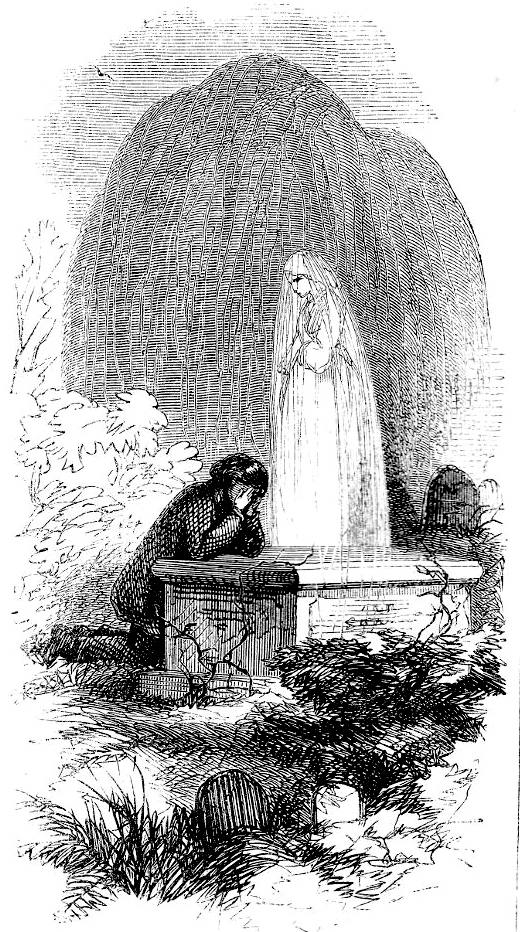Marion's dream of Walter's mourning at Laura's tomb.
John McLenan
17 March 1860
11.3 cm high by 5.6 cm wide (4 &frac;38 by 2 ⅛ inches), framed, p. 133; p. 106 in the 1861 volume edition.
Headnote vignette for the seventeenth part of Collins's The Woman in White: A Novel (1860).
After Fosco has delivered the good news that Glyde has relented over Laura's signing the parchment, Marian is so exhausted that she nods off on a sofa in drawing-room. In her waking dream she focuses on the tribulations of Walter Hartright in the jungles of Honduras, shipwrecked on the shore of a tropical island, and then grieving at marble tomb. Every time that she exhorts him to save himself, he promises to return.
Scanned image and text by Philip V. Allingham.
